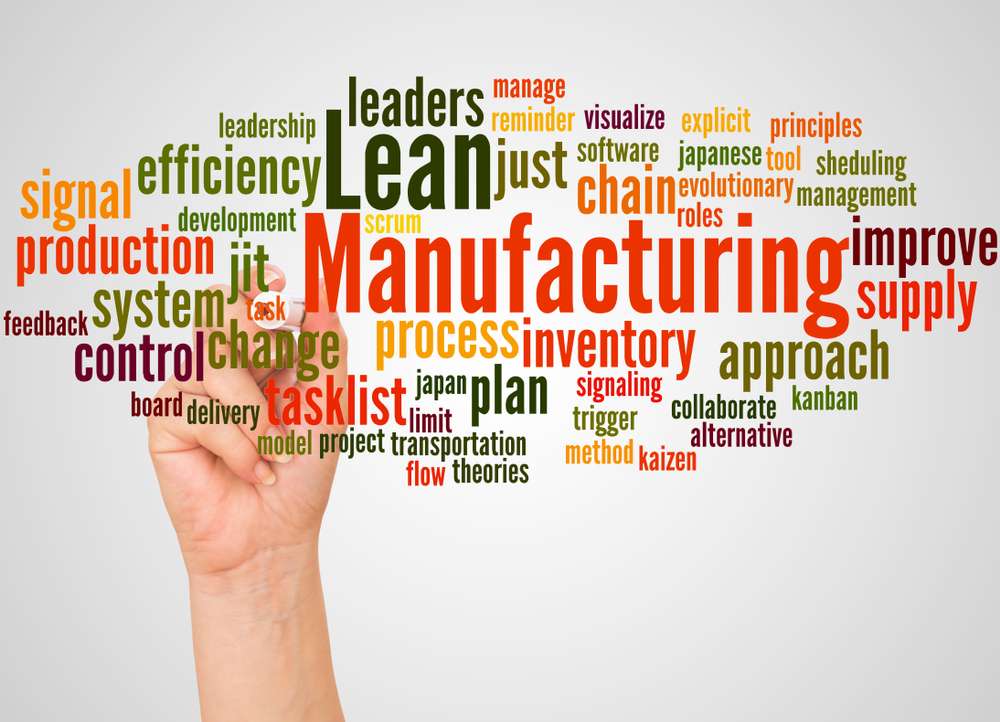
1. Introduction to Agile Methodologies for E-learning Project Management
In recent years, the demand for e-learning solutions has surged, due in part to the growing number of people around the world seeking access to online courses and training programs, as well as the growing need for organizations to provide their employees with effective, efficient, and engaging ways to learn new skills and expand their knowledge. Consequently, the e-learning industry has been evolving rapidly, with professionals constantly looking for innovative ways to develop and manage e-learning projects. One such approach is the adoption of Agile methodologies in e-learning project management. This chapter provides an overview of Agile methodologies in the context of e-learning project management and lays the foundation for subsequent chapters that delve deeper into various aspects of Agile e-learning development.
Agile project management is a flexible, iterative approach that values collaboration, adaptability, and delivering working solutions quickly. This method has its roots in the software development industry and has contributed to highly successful projects across various domains, including e-learning. The essence of Agile lies in the ability to adapt and respond to dynamic project requirements, collaborate closely with clients, and deliver fully-functioning solutions in short timeframes to stay aligned with clients’ evolving expectations.
There are several Agile methodologies commonly used for project management, and in e-learning development, the most popular ones include Scrum, Kanban, and Extreme Programming (XP). These methodologies have unique characteristics that make them suitable for specific types of projects, depending on the team’s size, the project’s scope, and the level of collaboration required, among other factors.
Traditionally, e-learning development followed a more linear process, often referred to as the ‘Waterfall’ approach. This method entails progressing through predetermined stages such as analysis, design, development, testing, and implementation one after the other. However, this approach has certain drawbacks, such as rigid timelines, limited flexibility to accommodate changes, and the potential for misaligned expectations between clients and development teams. As a result, e-learning developers and project managers began exploring Agile methodologies to address these shortcomings.
When compared to the Waterfall approach, Agile methodologies offer several advantages that make them well-suited for e-learning project management:
1. Flexibility and adaptability: Agile emphasizes regular feedback loops, allowing development teams to make adjustments and improvements as needed. This enables e-learning projects to respond effectively to changing requirements or new insights, ensuring a better fit for the target audience.
2. Improved collaboration: Agile relies heavily on collaboration between clients, subject matter experts, and development teams. By fostering open communication, Agile minimizes the risk of miscommunications and project scope discrepancy, creating a mutual understanding of goals and expectations.
3. Incremental delivery: Agile methodologies focus on delivering functional components of the project at regular intervals, enabling the team to gather feedback, track progress, and validate the effectiveness of the solution along the way. This allows for continuous improvement and better resource allocation based on project priorities.
4. Risk and issue management: Identifying and addressing potential risks and issues earlier in the development process can result in significant time and cost savings. Agile methodologies foster regular evaluation, allowing the team to address issues or risks proactively.
5. Customer satisfaction: Agile’s focus on collaboration, frequent delivery, and adaptability ensures that the final product aligns closely with the clients’ expectations and objectives, resulting in high levels of customer satisfaction.
Agile methodologies can significantly impact the effectiveness and efficiency of e-learning projects. By embracing Agile principles, e-learning professionals can achieve better outcomes for their clients, develop more engaging and targeted learning solutions, and adapt quickly to the ever-changing landscape of the e-learning industry. As we progress through subsequent chapters, readers will gain deeper insights into the benefits and practical applications of Agile methodologies in e-learning project management, providing them with valuable tools for success in their e-learning development careers.

2. Benefits of Adopting Agile Approaches in E-learning Development
Adopting Agile approaches in e-learning development offers a wide array of benefits, ranging from increased flexibility to improved stakeholder collaboration. With the rapidly changing landscape of technology and educational needs, Agile methodologies such as Scrum and Kanban have become increasingly popular due to their ability to adapt to changes and deliver value iteratively. In this chapter, we will explore the core benefits of incorporating Agile approaches into e-learning development projects.
1. Faster time-to-market: One of the significant advantages of Agile methodologies is the ability to deliver increments of the project in shorter, manageable timeframes. By breaking the work into smaller tasks, e-learning teams can focus on completing and delivering these tasks more quickly. This leads to faster time-to-market, allowing organizations to respond to market demands and customer needs more rapidly.
2. Enhanced adaptability: E-learning projects often encounter changes in requirements as the content evolves or user feedback is incorporated. Agile approaches promote embracing change by allowing teams to adapt to these changes seamlessly. By prioritizing tasks according to their immediate value and continuously reassessing priorities, e-learning professionals can ensure that their projects remain flexible and geared towards delivering the most meaningful results.
3. Improved collaboration: Agile methodologies emphasize close collaboration among team members, as well as with stakeholders and customers. This fosters a cooperative work environment where e-learning professionals, subject matter experts, and clients can offer regular input and maintain open lines of communication. This collaborative approach helps in identifying and addressing issues early in the development process, reducing the risk of costly rework and increasing the effectiveness of the final product.
4. Higher quality outputs: With Agile’s iterative approach, e-learning teams can continuously test and refine their work, enabling them to identify potential issues and fix them before they escalate into significant problems. This iterative process reduces the likelihood of defects and enhances the overall quality of the e-learning product. Furthermore, regular feedback and reviews from stakeholders and customers ensure that the product’s development aligns with their requirements and the project’s goals.
5. Increased learner satisfaction: Agile methodologies place a strong focus on delivering value to the end-user – in this case, the learner. By incorporating feedback from learners and prioritizing their needs, e-learning professionals can create more engaging and effective learning experiences. This increased emphasis on learner satisfaction can help drive user adoption and ensure a higher rate of success for the e-learning program.
6. Greater cost-efficiency: Agile approaches help minimize risks and avoid unnecessary expenses by addressing potential issues early in the development process. The adaptive nature of Agile methodologies helps teams make better use of their resources and avoid waste. Moreover, because Agile allows e-learning teams to deliver value iteratively, organizations can begin to realize a return on their investment sooner than in traditional development methods.
7. Better alignment with organizational goals: Agile methodologies are designed to improve alignment with organizational goals by prioritizing tasks that offer the most significant value first. This alignment promotes productivity and efficiency and ensures that e-learning projects contribute to the organization’s broader strategic objectives.
In conclusion, adopting Agile approaches in e-learning development can lead to significant benefits for both the organization and the learners involved. By embracing the flexibility, collaboration, and iterative nature of Agile methodologies, e-learning professionals can deliver better quality products faster, driving improved learning outcomes and greater overall success for their projects.

3. Key Agile Tools and Techniques for E-learning Teams
Agile project management has gained immense popularity in recent years due to its effectiveness in adapting to the ever-changing requirements of clients and stakeholders. This approach is of particular relevance to e-learning teams that often grapple with evolving content and learning technology. Implementing Agile tools and techniques in e-learning development can streamline the process, improve collaboration, and ensure a better end-product. This chapter discusses some key Agile tools and techniques e-learning teams can use to optimize their project management processes.
1. User Stories: In Agile, a user story is a brief, uncomplicated representation of a particular feature or requirement that is expressed from the perspective of the end-user or target audience. User stories help e-learning teams to maintain a clear focus on learner needs and make it easier to prioritize features and functionalities. User story mapping, a technique that arranges user stories into a visual representation, can be useful in e-learning project planning by defining the user’s journey through the course.
2. Backlog Grooming: A backlog is a prioritized list of tasks, user stories, and requirements that need to be completed by the e-learning team. Backlog grooming, sometimes called backlog refinement, is the process of updating and re-prioritizing the backlog regularly to account for new user stories, changes in requirements or project scope, and stakeholder feedback. This practice helps maintain a clear roadmap for the team and ensures that resources are allocated to the most critical tasks at any given time.
3. Iterative Development: Agile teams work on small increments of the project, often referred to as iterations or sprints. This approach allows for ongoing feedback, adaptation, and continuous improvement in e-learning courses. In iterative development, e-learning project teams work on specific user stories, complete them, and then move on to the next high-priority item in the backlog. This method helps the team to see progress quickly and adapt to any necessary changes as they arise.
4. Daily Stand-ups or Scrum Meetings: These brief, daily meetings enable e-learning project team members to update their colleagues on the work they have completed, any obstacles they have encountered, and the tasks they plan to tackle next. Daily stand-ups or scrum meetings promote team communication, transparency, and collective problem-solving while ensuring that all members are aware of the project’s current status and any potential roadblocks.
5. Retrospectives: An Agile retrospective is a collaborative meeting held at the end of each iteration or sprint, during which the entire e-learning team reflects on their recent work, assesses what worked well and what did not, and identifies areas of improvement for future iterations. This practice encourages continuous learning and drives team performance, keeping the focus on enhanced outcomes with each iteration.
6. Kanban Boards: A Kanban board is a visual tool used by Agile teams to manage and track their work. It typically consists of columns representing various stages of the development process, such as ‘To Do’, ‘In Progress’, and ‘Done’. E-learning project teams can use physical or digital Kanban boards to display user stories and tasks, monitor progress, and identify bottlenecks in real-time, fostering transparency and better decision-making.
7. Burndown Charts: These charts plot the remaining backlog items against time, providing a visual representation of the team’s progress throughout the project. E-learning teams can use burndown charts to track their progress in completing tasks, user stories, or learning modules and make adjustments to ensure they meet deadlines or milestones.
By leveraging these Agile tools and techniques, e-learning project teams can improve collaboration, prioritize learner needs, and deliver high-quality products that meet changing market demands. Implementing Agile practices in e-learning development empowers teams to rapidly adapt to evolving requirements, ensuring the delivery of effective, engaging learning experiences for their target audience.

4. Implementing Scrum Framework in E-learning Projects
The Scrum framework is a popular Agile methodology that offers E-learning development teams the ability to efficiently deliver high-quality learning products. Scrum allows teams to be more responsive to client needs and encourages collaboration, flexibility, and adaptability. This chapter will explore the steps to implementing Scrum in E-learning projects and how it contributes to greater project success.
Step 1: Assemble a Scrum team
The first step in implementing the Scrum framework is assembling a team consisting of a Product Owner, a Scrum Master, and development team members. The Product Owner represents the interests of stakeholders and is responsible for defining the project goals, prioritizing the backlog, and ensuring the project delivers value. The Scrum Master is the facilitator or “servant leader,” responsible for guiding the team through the Scrum process, eliminating roadblocks, and fostering a positive environment. The development team is composed of individuals with various skills, such as instructional designers, e-learning developers, and multimedia professionals, who work together to create the deliverables.
Step 2: Define the Product Backlog
The product backlog is an ordered list of tasks, features, and requirements necessary to complete the E-learning project. The Product Owner creates and prioritizes the backlog to ensure the most valuable items are addressed first. These items can be user stories, learning objectives, or any other units meaningful to the project. The backlog is a living document that evolves as the project progresses and new requirements emerge.
Step 3: Plan the Sprint
In Scrum, work is organized into time-boxed iterations called “sprints,” which typically last between one to four weeks. At the beginning of each sprint, the team holds a sprint planning meeting to determine which backlog items will be addressed and how they will be completed. The development team selects items based on their priority and capacity, breaking them into smaller, manageable tasks called “sprint backlog items.”
Step 4: Daily Stand-Up Meetings
During the sprint, the team holds brief daily stand-up meetings to discuss progress, identify possible roadblocks, and coordinate efforts. These meetings, which should last no more than 15 minutes, promote open communication and help keep the team focused on achieving the sprint goals.
Step 5: Continuous Development and Testing
Throughout the sprint, the development team works on the selected backlog items, creating and testing the E-learning components. By continuously developing and testing modules, the team can quickly identify and address issues, ensuring higher quality deliverables.
Step 6: Sprint Review and Retrospective
At the end of the sprint, the team holds a sprint review to demonstrate the completed work for the Product Owner and stakeholders. This meeting provides an opportunity to gather feedback and make adjustments as needed in the subsequent sprints. Following the sprint review, the team conducts a sprint retrospective to reflect on the sprint process, identify opportunities for improvement, and create an action plan for future sprints.
Step 7: Iterative Improvement
One of the key advantages of the Scrum framework is the opportunity for iterative improvement. As the team progresses through sprints, they continually refine the product based on stakeholder feedback and lessons learned. This iterative approach allows for the rapid delivery of high-quality e-learning content tailored to the needs of the end-users.
In conclusion, implementing the Scrum framework in E-learning projects empowers teams to deliver high-quality learning products quickly and efficiently. By assembling a dedicated team, creating a product backlog, planning sprints, conducting daily stand-up meetings, and iterating based on stakeholder feedback, E-learning development teams can enjoy the many benefits of this Agile methodology. With Scrum, E-learning professionals can create more responsive, flexible, and effective learning experiences that better serve the needs of modern learners.

5. Case Studies: Success Stories of Agile E-learning Projects
In this section, we will explore three case studies showcasing the successful implementation of Agile methodologies in e-learning projects. These examples demonstrate the benefits of adopting Agile practices, including increased flexibility, improved communication, and faster development times.
Case Study 1: ABC Company’s Digital Learning Platform
ABC Company, a global organization with a focus on employee training and development, decided to deliver an engaging, user-centered e-learning platform. To better address the changing needs of its employees and leverage technological advancements, the company adopted Agile methodologies.
The development team followed the Scrum framework, working in two-week sprints. Daily standup meetings facilitated open communication between team members, ensuring that everyone was aware of the project status and potential issues. By regularly reviewing and prioritizing the product backlog, the ABC Company was able to quickly adapt to changes in business requirements and user feedback.
The Agile approach enabled ABC Company to deliver a high-quality e-learning platform, which saw a 40% increase in employee engagement with training materials. The iterative development process allowed the company to achieve faster time-to-market while adapting to changing needs, proving the effectiveness of Agile methodologies in the e-learning domain.
Case Study 2: DEF University’s Distance Learning Program
DEF University aimed to create a distance learning program to supplement their traditional on-campus courses. Given the rapidly evolving field of online education, they chose to adopt Agile methodologies for a more flexible approach.
The e-learning team implemented the Kanban method, which provided them with a visual way of managing the project workflow, enabling them to easily identify bottlenecks and prioritize tasks. Weekly meetings allowed the team to discuss progress, reassess priorities, and plan for the upcoming week.
Thanks to the Agile approach, the distance learning program was launched within six months, achieving high user satisfaction rates. Additionally, the university was able to continuously improve the program based on user feedback, making adjustments to the course offerings, and refining the user experience through ongoing iterations.
Case Study 3: GHI Corporation’s Compliance Training Transformation
GHI Corporation, facing stringent regulatory requirements, sought to redesign their compliance training program to improve employee understanding and retention of key policies. Agile methodologies were chosen to foster collaboration and ensure frequent stakeholder input throughout the development process.
The e-learning team adopted the Scrum framework, with cross-functional teams collaborating in sprints. Stakeholders, including legal and compliance experts, were actively involved in sprint planning and review meetings. This collaboration enabled the development team to rapidly prototype, test, and iterate, ensuring that the training was both engaging and accurate.
Upon launch, GHI Corporation experienced an 80% completion rate for their new compliance training modules, with employees providing positive feedback on the improved clarity and interactivity of the training. The Agile approach allowed the company to quickly deliver a compliance training program that met regulatory requirements while engaging employees.
Conclusion
These case studies highlight the successes achieved by adopting Agile methodologies in e-learning projects. The Agile approach provides e-learning teams with the flexibility, communication, and adaptability needed to create and deliver high-quality, user-centered products in rapidly evolving digital learning environments. By embracing Agile practices, e-learning professionals can improve project outcomes, enhance collaboration, and better respond to the needs of learners and stakeholders in today’s fast-paced world.

6. Tips for Successfully Integrating Agile into Your E-learning Development Process
Successfully integrating Agile methodologies into your e-learning development process can lead to increased flexibility, speed, and collaboration. Below, we have provided some practical tips to smoothly incorporate Agile into your workflow and improve project outcomes.
1. Understand Agile principles: Before implementing Agile methodologies, it is crucial for e-learning professionals to have a clear understanding of Agile principles, such as responding to change, customer collaboration, working products, and sustainable development. This understanding will allow your team to adapt better to the framework and work closely together towards achieving common goals.
2. Comprehensive training for team members: To maximize the full potential of Agile, provide training to all team members involved, including designers, developers, testers, project managers, and stakeholders. This helps ensure that everyone is on the same page and understands how Agile practices contribute to the success of the e-learning project. Additionally, consider certification programs like Certified ScrumMaster (CSM) or Project Management Institute – Agile Certified Practitioner (PMI-ACP), as they provide essential knowledge and credibility to your team and organization.
3. Open communication & transparency: Encourage an open, transparent, and collaborative environment where team members can communicate freely, raise issues, and share ideas. This helps identify and resolve any potential bottlenecks faster and ensures that all team members are aligned with the project’s objectives.
4. Iterative development & feedback: Break the e-learning project into smaller, manageable chunks (iterations/sprints). Work on each iteration to completion, then gather feedback from stakeholders, subject matter experts, and end-users. Use that feedback to make necessary adjustments for the next iteration. This iterative approach enables your team to respond to changing requirements and constantly refine the e-learning product.
5. Establish clear roles & responsibilities: In Agile e-learning projects, it’s crucial to have a well-defined structure to assign roles and responsibilities among team members. This helps maintain a streamlined workflow and ensures that everyone understands their individual contributions and accountability to the project.
6. Embrace change: Agile methodologies aim to tackle issues and adapt to changes in real-time – this mindset should be adopted by your team too. Instead of resisting change, view it as an opportunity to improve the e-learning project and deliver a better end product to the learners.
7. Use Agile tools: Utilize Agile project management tools like JIRA, Trello, or Asana to streamline teamwork, manage tasks and resources, and maintain transparency throughout the development process. These tools provide visibility, enable real-time communication, and help track progress.
8. Regular retrospectives: After each iteration or sprint, conduct a retrospective session where the team can reflect on the successes and areas for improvement. This enables continuous growth and ensures that the lessons learned are implemented in future sprints, making the overall process more efficient.
9. Maintain balance between quality and speed: While Agile encourages fast-paced development, it’s essential not to compromise on the quality of the e-learning product. Implement quality assurance methodologies like automated testing, peer reviews, and user testing to ensure that your e-learning content meets the desired standards.
10. Monitor & adjust: Actively monitor your e-learning project’s progress and performance using agile metrics, such as velocity, burn-down charts, and sprint goals. This helps you identify how well your team is adapting to Agile methodologies and make any necessary adjustments to improve efficiency and effectiveness.
In conclusion, integrating Agile methodologies into your e-learning development process requires a deep understanding of Agile principles, proper training, a culture of open communication, and flexibility to adapt to changes. By following the tips outlined above, you can efficiently incorporate Agile practices into your e-learning project management and experience the benefits of enhanced collaboration, iterative development, and improved overall project outcomes.